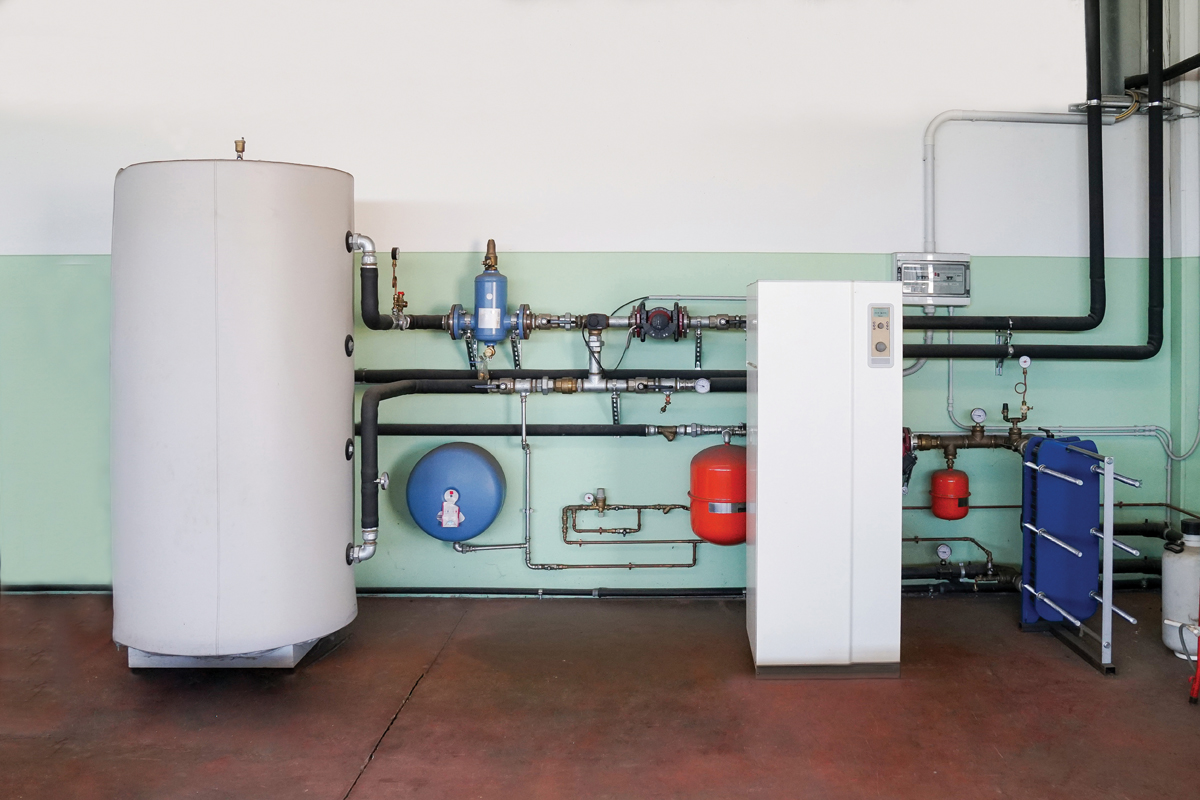Harnessing the Earth’s Energy: Geothermal Retrofitting
By Marc Ferris | Spring 2024 | High-Performance House
Tapping the heat beneath our feet with geothermal heating and cooling is an involved process for homeowners who want to retrofit, but one that pays dividends over time for those in their homes for the long haul. “There is a considerable capital outlay, but there are incentives from the utilities and government tax credits, so when you add up all the savings on energy costs over time, it’s a good investment if you plan to stick around in the home for a while,” says Ron Kamen, principal and CEO of EarthKind Energy Consulting in Rhinebeck.
In addition to saving money long-term, switching to geothermal for heating, cooling, and hot water means ripping out the world-destroying fossil fuel equipment in the home and using much less energy. “Homes are the largest emitters of greenhouse gases, so this is the number one way anyone who wants to be a better steward of the environment can make an impact,” says Keith Albee at Peekskill-based Dandelion Energy.
Many homeowners also seek to do away with fluctuating fuel costs and maintenance on boilers and air conditioners, he says. “People are tired of fuel cost volatility, production supply issues, and conflicts abroad; geothermal removes all of that. There is a better way.”
Less than one percent of homes in the United States tap energy from the ground, though the practice is longstanding in Europe and other countries. “Iceland gets almost all of its energy with geothermal,” says Albee.
Set it and Forget It
The most popular type of geothermal system, called a closed loop, drills up to 500 feet into the ground (anything deeper in the ground requires a state mining permit), Pipes filled with water and antifreeze run through a heat pump that replaces the furnace and air conditioner.
There is no need to maintain anything, the system works on its own through a thermostat. Electricity is emitted, but it’s a tiny fraction of a home whose temperature is regulated by fossil fuel.
One way to look at it is that the Earth is a giant thermal battery from which a home is drawing energy. Five feet below the ground, the ground temperature remains a constant 55 degrees.
“If you want to bump it up in the winter, you don’t have to go too far and if you want to cool down during the summer, you don’t have to do anything, really,” says Kamen.
In the summer, the system draws heat from the air in the home and transfers it into the ground, working in similar fashion to an air conditioner. In the winter, it takes the heat from the ground and circulates it throughout the house.
The retrofit itself is relatively straightforward. “If a homeowner has a driveway, there is probably enough land to drill,” says Matthew Desmarais, founder of Energy Catalyst Systems, based in Troy. Air is delivered through the existing duct system, but sometimes, ducts must be added to a project, says Desmarais. No one misses the loud air conditioner box and the hassle of maintaining it, he notes.
Show Me the Money
Because there are many steps to a geothermal retrofit and each job is different, reputable companies price out the entire project. Cost varies due to the complexity of the install, the manufacturer of the system, the size of the system, along with the age and insulation of the house.
The cost of drilling, for example, depends on the geology of the land, which can range from granite to softer soil. “We take a portfolio approach, there’s no price per foot for the drilling, for example,” says Albee at Dandelion. “We’re installing the complete turnkey system, it’s not sushi a la carte where the heat pump is X and the drilling is Y.”
Incentives for homeowners from Central Hudson include $2,000 for up to 10,000 BTUs and $100 per outdoor condenser. On a typical $60,000 job, according to the utility, the Clean Heat Rebate would be $16,000.
New York State also offers a tax credit covering 25 percent off installation costs (which would knock $5,000 off the total, according to Central Hudson) and the federal government’s 30 percent credit to cover the total cost of the entire system would total $16,000, bringing the overall cost down to around $28,000. The state also offers low-interest financing programs and other incentives.
Geothermal retrofits can bring many benefits: cost amortization, peace of mind, and getting off of fossil fuels, which is top of mind for many these days. “People tell me all the time, ‘it’s like magic,’” says Desmarais. “And, really, it kind of is.”
